Selection of the Month: Summer 2016
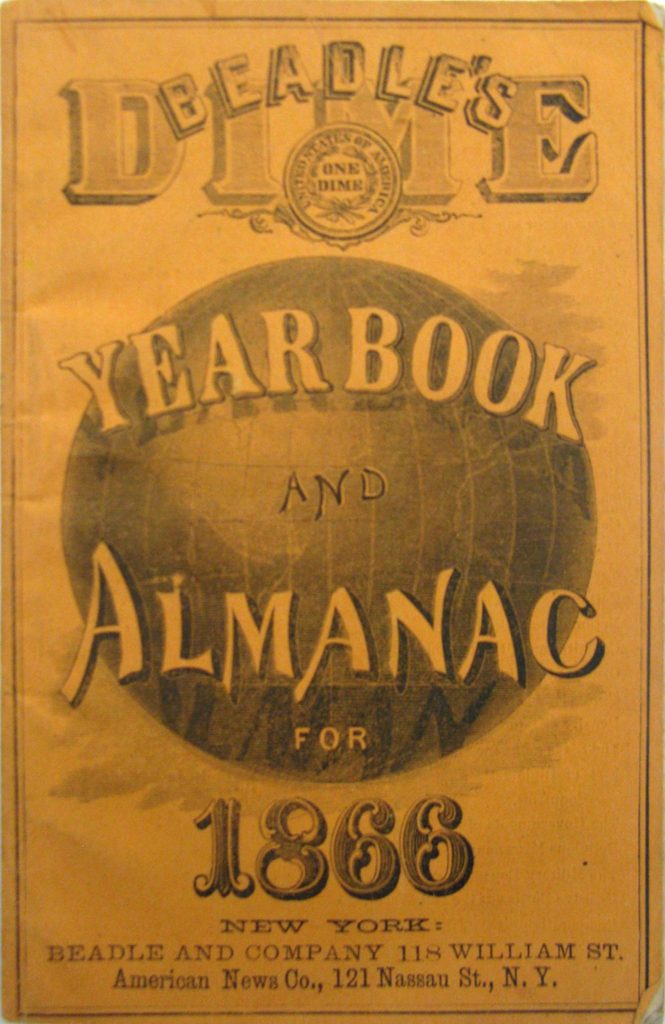
Beadle’s Dime Year Book & Almanac for 1866
Beadle and Adams
New York: Beadle & Company, 1866-67
Gould Library Special Collections
This almanac — a collection of useful information of all sort, including weather facts, postal rates, the text of the constitution, and state populations — was published in 1866, the year of Carleton’s founding. Publisher Beadle & Company was best-known for dime novels, popular editions of adventure and romance novels that were inexpensive and widely available. Beadle & Company published only two almanacs: one in 1865 and one in 1867.
Selection of the Month: May 2016
Fortune
October, 1943
New York: Time, Inc.
Gould Library
While researching my dissertation on San Francisco Bay shipbuilding during World War II, I discovered invaluable material in Fortune magazine, which served during the war as both a chronicler of the American war effort and a critic of its excesses (massive overproduction) and shortcomings (underuse of women and African American labor).
Fortune focused heavily on individuals such as the industrialist Henry J. Kaiser. “Henry J.” rose from a regional construction contractor in the 1920s to a major player in massive New Deal construction projects like Hoover Dam and then a dominant figure in the war economy, primarily through a giant network of shipyards. In 1943, Fortune profiled Kaiser in a three-part “Earth Mover” series. The photographs on these pages – from Part III of the series – document a petroleum installation (on the left) and a bomber in plant where airplanes were readied for combat. Fortune’s coverage of Kaiser was admiring but not fawning, seeing him as an iconoclast who was – in our terms – disrupting both tradition-bound industries and an inertial government.
Reading pieces like “Earth Mover,” I learned more about how the wartime economy worked and soaked up a historical moment when Americans felt that they were literally saving the world through hard work, ingenuity, and sacrifice.
– Christopher Tassava, Director of the Grants Office
Selection of the Month: April 2016
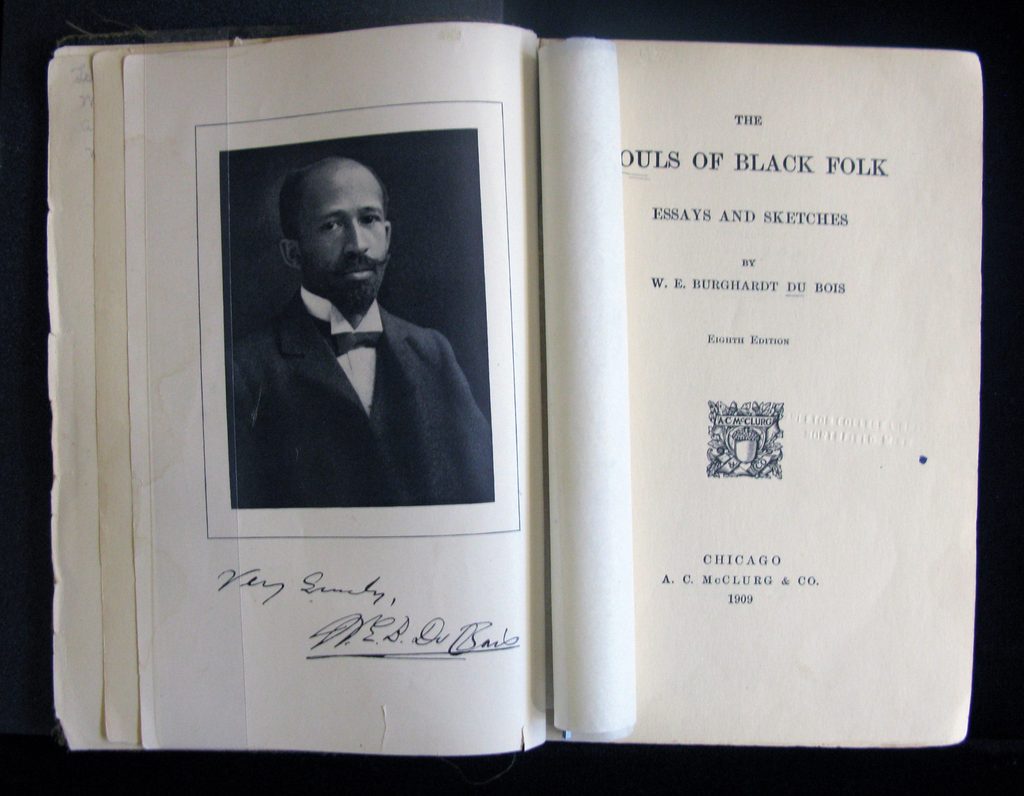
W. E. B. (Burghardt) Du Bois
The Souls of Black Folk: Essays and Sketches
Chicago: A. C. McClurg, 1909
Gould Library Special Collections
I first encountered The Souls of Black Folks while pursuing an accounting degree at the university where Du Bois once taught, Clark Atlanta University. This encounter changed my worldview, and was pivotal in my decision to pursue graduate degrees in African and African American Studies and in the histories of Africa and the African Diaspora. Published in 1903, it has come to be regarded as a classic work of American literature, a foundational work in the history of sociology, and a cornerstone of African-American literary history. It contains a collection of several essays that cover such topics as race, history, education, sociology, and religion. Du Bois coined the notion of “double-consciousness;” he defined it as a “sense of always looking at one’s self through the eyes of others, of measuring one’s soul by the tape of a world that looks on in amused contempt and pity.”
—Thabiti Willis, Assistant Professor of History
Selection of the Month: February 2016
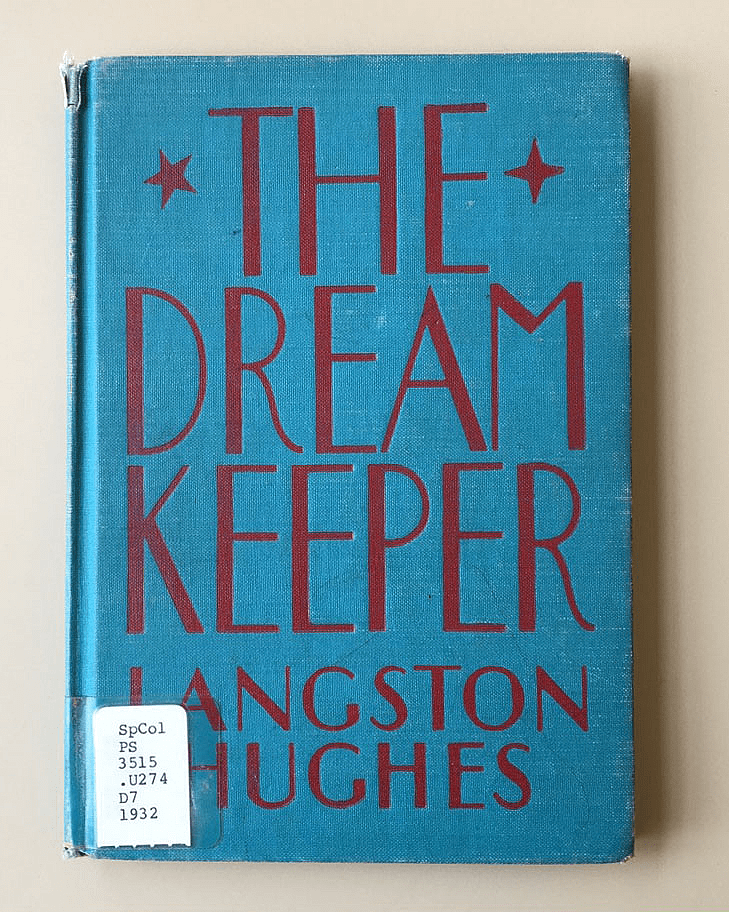
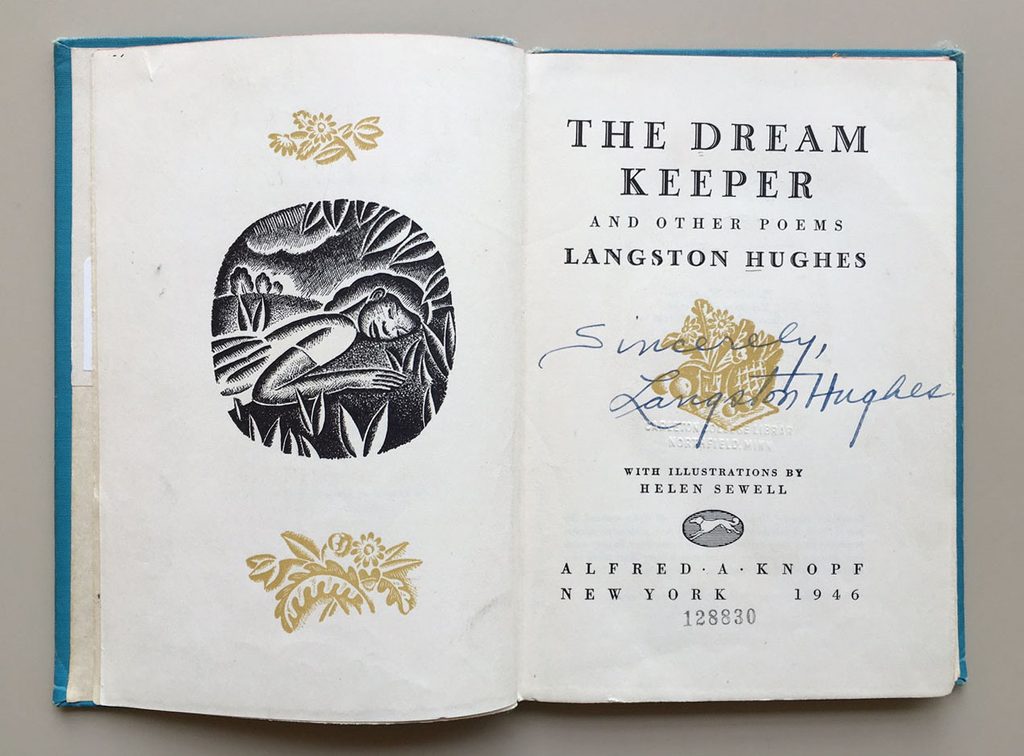
Langston Hughes
The Dream Keeper and Other Poems
Illustrated by Helen Sewell.
New York: A. A. Knopf, 1932
Gould Library Special Collections
I remember receiving The Dream Keeper as a gift when I was 9 or 10 years old, and treasuring it ever since. This would have been shortly before or shortly after Martin Luther King and Robert F. Kennedy were assassinated and my hometown, Washington D.C., exploded in riots. The Poor People’s March on Washington happened around then, too (in June 1968), and my parents were involved in organizing support, so that made me all the more receptive to seeing the connections between race and class and how they were reflected in Langston Hughes’ poems “for children.” Today, The Dream Keeper awakens childhood memories and emotions, fleeting images of wrapping stacks and stacks of sandwiches in the kitchen for the Tent City occupiers on the Mall, and car rides past a devastated 14th Street.
Pamela Feldman-Savelsberg
Broom Professor of Social Demography and Anthropology
Director, African and African American Studies Program
Selection of the Month: January 2016
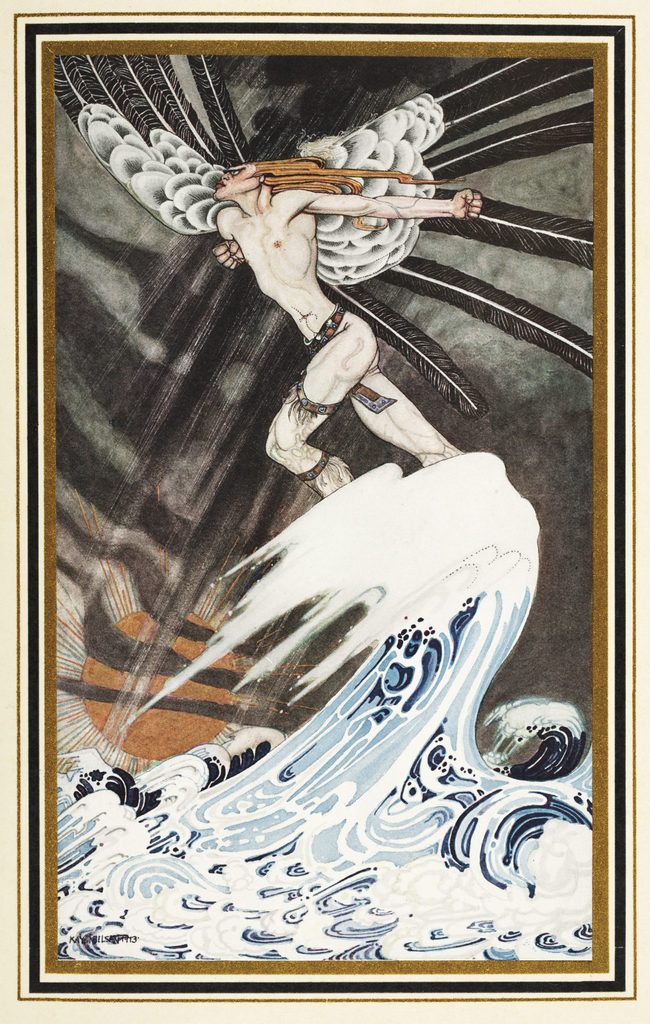
The North Wind goes over the sea
Peter Christen Asbjørnsen
East of the Sun and West of the Moon: Old Tales from the North
Illustrated by Kay Nielsen
London: Hodder and Stoughton, 1924
Gould Library Special Collections
Danish illustrator Kay Nielsen’s lush Art Nouveau watercolor illustrations perfectly complement the fairy tales collected in this volume. As noted in the Preface, “… the exquisite bizarrerie of his drawings aptly expresses the inner-most significance of the old-world, old-wives’ fables.”
In the 1930s, Nielsen moved to California to work for The Walt Disney Company, creating sequences for the animated film, Fantasia. When he returned to Denmark, his illustrations were no longer in demand and he died in poverty. Today, Nielsen is considered one of the finest children’s book illustrators. In 2015, Taschen issued a reprint of the original 1914 edition of East of the Sun and West of the Moon, introducing a new generation of readers to Nielsen’s celebrated drawings.
Selection of the Month: December 2015
J. M. Neale
Good King Wenceslas: a Carol
Illustrations by Arthur J. Gaskin
With an introduction by William Morris
Birmingham: Cornish Brs., 1895
Gould Library Special Collections
William Morris wrote the introduction for this edition of Good King Wenceslas, noting that the story of the King who came to the aid of a poor peasant in the cold of winter appealed to him as a “happy memory of past days.”
The carol was illustrated by artist, designer, and teacher Arthur J. Gaskin, an active member of the Arts and Crafts movement. In the illustration on the left, we see the kindly king wrapped in his robe against the bitter wind, leading his page through the deep snow, his footsteps making a trail for the man to follow.
Selection of the Month: November 2015
The English Bible
Volume II
Hammersmith: The Doves Press Cambridge, 1903-1905
Gould Library Special Collections
The Doves Press Bible, a five-volume edition considered the masterwork of the press, exemplifies the qualities of good design and fine printing that characterize the work of the Press (Volume II is on view here). Founded in 1900 in reaction to the cheaply printed, poorly-designed books so common at the time, The Doves Press set out to produce beautifully designed, carefully crafted fine-press books. The type was set and printed by hand, on handmade paper and each page and line of text reflects the modern, almost austere design for which the Doves Press became renowned. The only ornamentation on these pages: the single red capitals that mark the beginning of each psalm.
Selection of the Month: October 2015
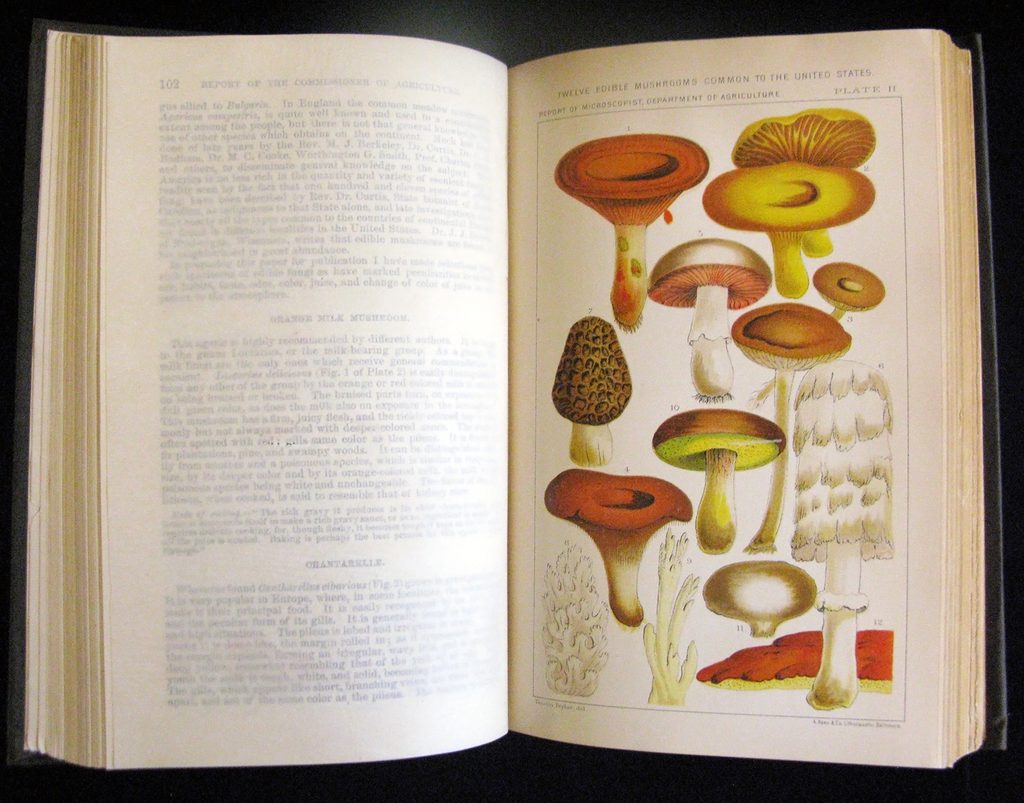
Twelve Edible Mushrooms Common to the United States
Illustrated by Thomas Taylor
Printed by A. Hoen & Co. Lithocaustic, Baltimore
Report of the Commissioner of Agriculture. 1885
Department of Agriculture
Washington, DC.: Government Printing Office, 1885
Gould Library Government Documents
In addition to his skills as an illustrator, Thomas Taylor was a mostly self-taught researcher and the first chief of the Division of Microscopy at the Department of Agriculture. He made comparison studies of the tissues of diseased and health plants and recommended methods of disease control, and often illustrated his reports himself. He took an ongoing interest in edible mushrooms and published the Students’ Handbook of Edible and Poisonous Mushrooms in 1897.
Selection of the Month: September 2015
F. V. Hayden
Sixth Annual Report of the United States Geological Survey of the Territories : Embracing Portions of Montana, Idaho, Wyoming, and Utah: Being a Report of Progress of the Explorations for the Year 1872
Washington: Government Printing Office, 1873
Gould Library Special Collections
This composite image of some of the most spectacular geysers of Yellowstone illustrated a report of a geological survey of the western US made during the summer of 1872. In addition to scientists and mapmakers, the expedition included two artists: photographer William Henry Jackson and illustrator W. H. Holmes. Images they made informed the geologists and topographers, but were also key to promoting the natural beauty of the region to a wider public.
This image was drawn from Jackson’s photographs of the geysers; the photographer is visible under a hood, peering into his camera, in the central of the page.
This book is part of Gould Library’s Government Documents collection. In 2015, Gould Library marks its 85th year with the Federal Depository Library Program, a nationwide program that disseminates information published by the Federal Government free of charge to selected libraries, ensuring the American public has free access to the materials, both in print and online.